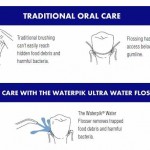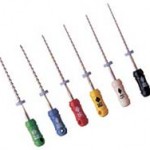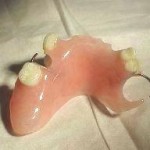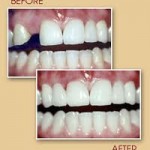Best toothbrush for periodontal disease
The importance of oral hygiene has been highlighted over the years and recently awareness has been created as it is not only for good dental health but one’s overall well-being. Gum disease is a major risk factor and has been associated with serious health conditions, including heart disease, diabetes, strokes, respiratory disease, digestive disorders, pancreatic cancer and preterm low birth weight
babies. It begins with bacteria invading the gums and populating in great amounts destructing the tooth tissues and supporting tissues. If the early stage of gum disease (gingivitis) if left untreated, it can progress to more severe gum disease (periodontitis).
Periodontitis comes with swollen and bleeding gums, recession, tooth sensitivity, root decay, loose tooth leading to tooth loss in advanced cases. The best way for treating gum disease is by regular brushing and flossing. It is essential for one to administer proper brushing techniques with the right toothbrush for the health of their gums and prevent tooth loss as well as fighting against other health challenges. There are various types of toothbrushes available in the market, with newer products seems better than
previous ones. Hence, the confusion arises to select the best toothbrush to care for their teeth and gums. Continue reading
Monthly Archives: July 2011
What is a Waterpik?
 Waterpik is an oral irrigating system that uses a stream of water to clean the teeth as well as below the gum lines (also known as gingival margin). As brushing and flossing will not reach that area, plaque and bacteria can accumulate and proliferate, leading to gum diseases. Continue reading
Waterpik is an oral irrigating system that uses a stream of water to clean the teeth as well as below the gum lines (also known as gingival margin). As brushing and flossing will not reach that area, plaque and bacteria can accumulate and proliferate, leading to gum diseases. Continue reading
What Is a Dry Socket?

pain after third molar removal
A tooth socket holds the tooth in place by connecting its roots to the underlying alveolar bone. After a tooth is pulled, a blood clot forms over the socket to protect the bone and nerves underneath. Dry socket also known as alveolar osteitis is a common condition occurring few days after an extraction where the clot becomes dislodged or dissolves. It attracts air, food, fluid and almost anything that enters the mouth which leads to bacterial infection and results in severe pain. Dry socket delay healing of surrounding tissues and alveolar bone. Higher incidence of dry socket occurs after removal of impacted mandibular third molars followed by upper molars, premolars, canines and incisors. It occur twice more often after single tooth extractions when compared to multiple extractions completed at the same time. It occurs in those around the ages between 20 and 40. Continue reading
Dental Tools Used in a Root Canal
 The following are some brief explanations regarding the instruments used during root canal treatment.
The following are some brief explanations regarding the instruments used during root canal treatment.
Basic examination kit that is used for examination and diagnosis consists of
(1)Mouth mirror – to provide visualization and facilitate examination.
(2)Periodontal probe –
(3) Sharp explorer – to locate the root canal orifice.
(4)Tweezers/ Cotton forceps Continue reading
10 Good Reasons to Switch to Electric Toothbrushes
Have you ever considered switching to an electric toothbrush? With electric toothbrushes becoming increasingly common nowadays, many people are considering this option. However, are electric toothbrushes just an unnecessary novelty, or are they really more effective than the conventional toothbrush? Let’s find out.
What Is a Denture Reline?
Denture is a prostheses that replaces the missing tooth and the tooth supporting structures. It can either be removable, or fixed. After a denture has been worn for a long time, the shape of the base can change and no longer conform to the shape of the mouth. This can lead to loosening of the denture and resulting in discomfort. When this happens, the denture has to be remade. While waiting for the new denture to be fabricated, the base of the old denture can be changed to improve the comfort of the wearer temporarily. This procedure is known as relining. The reline material will fill the gap between the existing denture base and the surface of the oral tissue, making the denture adapted to the shape of the mouth. Continue reading
How to Use Fluoride Therapy to Prevent Cavities
Fluoride is available in many ways:
1. Through water fluoridation.
Water fluoridation is listed as one of the ten great public health achievements of the 20th century by U.S Centers for Disease control as it is a feasible way to introduce fluoride to the public. Although there may be different opinions regarding to adding fluoride to our water but it is undeniable that water fluoridation is an inexpensive and feasible way especially to people which stay in rural areas and fluoridated water might be the only source of fluoride. Continue reading
What Is Dental Floss Made Of?
Dental floss is a piece of string that is used to clean the spaces in between our teeth, which is also known as interdental spaces. This is necessary because the bristles of the toothbrush is not able to enter into such fine spaces, and this will lead to debris accumulation if not cleaned by dental floss. Continue reading
Procedure for Conventional Partial Dentures
 Partial dentures are indeed a cheaper option compared to bridges and implants to replace missing teeth. But, how much do you know about the procedures to construct a partial denture? Continue reading
Partial dentures are indeed a cheaper option compared to bridges and implants to replace missing teeth. But, how much do you know about the procedures to construct a partial denture? Continue reading
What is a dental bridge?
A dental bridge is also known as a fixed partial denture. It is used to replace a single missing    tooth or a short span of missing teeth. It is a permanent prosthesis, which is joined to the tooth    or implant adjacent to the space created by the missing tooth. Before the bridge is fabricated, the   adjacent tooth on both sides of the missing space is prepared (a cantilever bridge requires only   one adjacent tooth to be prepared). The tooth is reduced to the appropriate size, depending on the  material used to fabricate the bridge. The reduced tooth will serve as the anchor unit, holding the  bridge in place. A dental bridge can be fabricated using all metal, all porcelain, porcelain fused to  metal or gold. Continue reading

